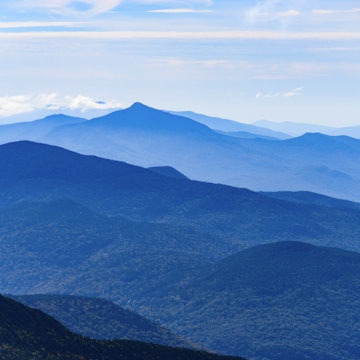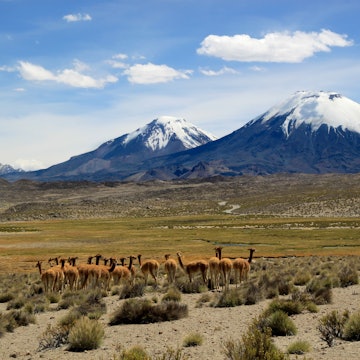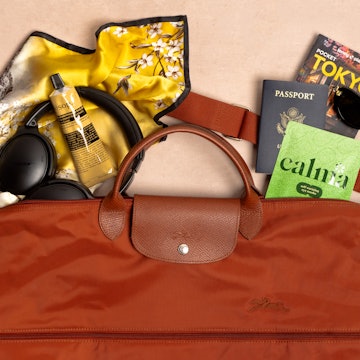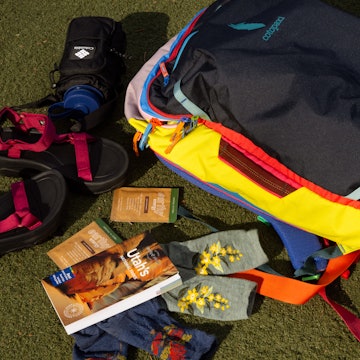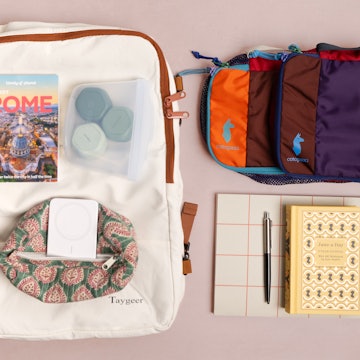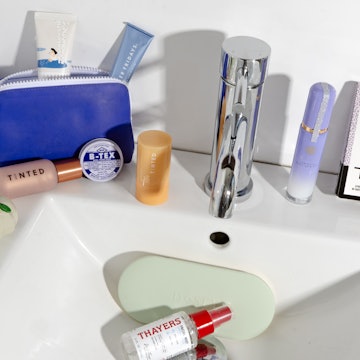

Löyly Design Sauna in Helsinki, Finland. Alexanderstock23/Shutterstock
The images of Finland that filter through to the outside world cast the thickly forested, lake-speckled nation in an intriguingly quirky light.
The Nordic nation has topped the World Happiness Report for eight successive years, for example – yet its citizens are famously prone to introspective melancholy, too. Finns love isolation so much that even a car passing the other way on the road can be socially intense for them – yet these people also created what was once the world’s biggest mobile-phone company, Nokia.
Sweating while scantily clad (or even downright naked) in wooden rooms alongside strangers, then cooling off with a plunge into a lake scarcely above freezing point – otherwise known as sauna-going – has long been the national pastime. And this is also a land whose folk culture inspired Tolkien to create Middle Earth, has the planet’s highest concentration of heavy metal bands, and is where Santa has his permanent address.
Which direction do you want to go? However you want to feel your way around Finland for the first time, here’s all you need to know.

When should I go to Finland?
If in search of Finland’s snowy winter wonderland, December to February is best. Lapland’s ski season typically lasts from late November to April and the Arctic SnowHotel, one of the world’s largest snow- and ice-built hotels, opens its doors from mid-December to mid-March. The northern lights are most visible between September and March.
Snowmelt ushers in the time for other outdoor activities. Hiking season stretches from May to late September in the south, and gets going in June up north. June to August is a fine time for festival lovers, with Finland’s biggest rock festival, Rockfest, in Turku in June; lakeside Savonlinna’s famous opera festival in July; and Helsinki Festival, the largest arts festival in the Nordics, in August.
How much time should I spend in Finland?
Finland is a big country, and its top sights are scattered. With five days in the country, it’s best to stick to either the south or the north. A southern sojourn could have you sightseeing in capital Helsinki, discovering Porvoo and its pretty wooden architecture, launching a trip to the Archipelago Sea from Turku and exploring Europe’s largest lake district, Finnish Lakeland.
Up in Arctic Lapland, Rovaniemi is the key transport hub. From here, you could feasibly factor in a session of husky-sledding, one night in the Arctic SnowHotel and a festive jaunt to see Joulupukki (Father Christmas) at Santa Claus Village, before forging north to Ylläs for Finland’s highest-elevation downhill skiing and the world’s only sauna gondola. Finish off at Saariselkä, careening down Finland’s longest toboggan run and venturing into Santa’s spiritual home, lonesome Urho Kekkonen National Park.
Come here for a week or more, and you could see a bit of both south and north, bearing in mind you’ll need to either fly or take an eight-hour train between the two. Consider a few extra days spent in nature: hiking in the likes of Nuuksio National Park, a bastion of the Siberian flying squirrel and accessible from Helsinki metropolitan transport, or paddling gargantuan Lake Saimaa through national park–protected waters.

Getting in and around Finland
Helsinki has the country’s main international airport, serving major European destinations as well as New York, Los Angeles, Doha, Hong Kong and Tokyo. Helsinki’s excellent public-transport system includes metro, tram, bus and even boat lines, with a ticket valid for up to 110 to minutes covering any (or all) of these modes costing €3.20 (US$3.64). Finland’s railway network connects main cities like Helsinki, Turku, Tampere and Rovaniemi. For parts of the remoter north of the country, you’ll have to fly and/or travel by bus or rental car. The main airports of note, all serving Helsinki, are Rovaniemi, Kittilä (for Ylläs) and Ivalo (for Saariselkä and Urho Kekkonen National Park). A rental car is an alternative for getting around in rural areas where bus links are scant.
Top things to do in Finland

Delight in art and design in Helsinki
Central Helsinki sports a Design District centered on the Design Museum, ground zero for exploring the country’s reputation for groundbreaking architecture and design. Here, learn about the names that catapulted Finland to the vanguard of the Scandinavian Modern and worldwide mid-century modern design movements. Leading the pack was Alvar Aalto, whose philosophy of Gesamtkunstwerk (“total artwork”) carried through to both the architectural and interior design of buildings. The master’s home and studio in the leafy, lovely Munkkiniemi district, the Aalto House, completed in 1936, is open for guided tours by appointment. It draws on its natural surroundings as a starting point for its design – a concept revolutionary at the time – and exhibits numerous elements Aalto gave to the design world, like beehive lamps.
Finnish art and design was in a strong position before Aalto, though – especially in the national expression of art nouveau (Jugendstil). A top example is Jugendsali on the northern side of Esplanadi: sit in the cafe to admire the vaulted, glass-roofed interior. And stop by the former home-turned-museum of seminal painter Akseli Gallen-Kallela, Gallen-Kallelan Museo, to see the artist’s evocative illustrations of the Kalevala, the 19th-century epic poem recounting folk tales from Finland’s ancient past.

Embrace lakeside life in the vast Finnish Lakeland
Some call Finland the “Land of a Thousand Lakes.” In actuality, the country has close to 200,000 bodies of water, with the largest concentration in a vast tract of central and eastern Finland.
Squeezed between lakes Näsijärvi and Pyhäjärvi in Lakeland’s southeast, Tampere bills itself as the sauna capital of the world. Get steamy at Rauhanemi Folk Spa, going strong since 1929, then throw yourself into the forest-framed lake alongside it. For a more heart-in-mouth lakeside thrill, try flyboarding – wakeboarding with a Jet Ski propelling you several meters into the air as you go – at Tampere’s Water Action Park (Tampereen Vesijettivuokraus).
Further east, Savonlinna is the cultural capital of the lakes, crowned by the 15th-century Olavinlinna fortress, which hosts the town’s internationally renowned opera festival each July. Finland’s best kayaking is on mighty Saimaa: paddle out to one of the lake’s two national parks, Linnansaari (from Oravi) or Kolovesi (from Kirkkoranta) on isolated waterways, looking with baited breath for the rare Saimaa ringed seal.

Lap up Lapland’s winter wonderland
Lapland capital Rovaniemi is most fabled for Santa Claus Village, a razzmatazz-rich fairy-tale complex bang on the Arctic Circle line where you can meet its bearded, red-and-white-suited resident, his elvish helpers and his reindeer on any day of the year. For an antidote to such Christmassy commercialism, make a beeline into the surrounding forests and take a husky-led sleigh ride through the trees. You could overnight in Finland’s only snow hotel, too, where 20 magical rooms decorated with ice-carved furniture (plus the restaurant and even a snow sauna) are rebuilt with the white stuff annually. Or plump for aurora-viewing accommodation at Apukka Resort, where glass-roofed cabins get you spotting the northern lights from the comfort of your bed.
More sensational snow sports are nearby. At Finland’s largest ski area, Ylläs, you can take the world’s only sauna gondola up to the fell top for some of the country’s best downhill skiing: slopes up to 2 miles (3km) long begin at an altitude of 2360ft (719m). At Saariselkä, near Inari, you can soar down Finland’s longest toboggan run: a 3937ft (1200m) thrill ride with a course drop of 426ft (130m).
And as all Finns really know, Santa’s spiritual home is not glitzy Santa Claus Village, but rather Urho Kekkonen National Park. One of the country’s biggest protected areas at 985 sq miles (2550 sq km), it fans east from Saariselkä through a montage of dense forest, fells and gorges up to the frontier with Russia. Trails into the park’s western flanks begin in Saariselkä, while you’ll need to get to Kemihaara on the park’s southern limits to access the 11-mile-long (18km-long) trail that yields views of Santa’s hideaway, Korvatunturi fell.

Sample sauna culture
Saunas bind Finns together more than anything, and sessions in the steam are practically religious rituals here. Taking time to disrobe, relax in a pinewood-built space and sweat out your impurities while steam known as löyly circulates, before heading for a bracing dunk in the lake, is perhaps the foremost facet of Finnish culture.
A mind-boggling variety of sauna experiences beckon beyond Tampere’s famous spots. Go trendy at Helsinki’s Löyly Design Sauna, a state-of-the-art play on traditional Finnish wooden architecture overlooking the Baltic Sea, or ultra-traditional at Jätkänkämpä sauna in Lakeland city Kuopio, supposedly the world’s biggest wood-smoke sauna. (Read more about sauna etiquette below.)
My favorite thing to do in Finland
Sauna culture simply fascinates me. It’s an activity seemingly designed to appreciate the fundamentals of Finnish nature – especially if you’re in the north where there are lots of wood-smoke saunas, the top-tier sauna experience. At Kiilopää Fell Center near Saariselkä in Lapland, you can get your sweat up as aromatic birch twigs openly smolder, then sink into a shiver-some swimming hole hemmed in by ice for almost half of the year – and always backed by the utter silence of the forest. It’s a memorable assault on the senses.
How much money do I need for Finland?
Week-long pass enabling unlimited 60-minute bike rides in Helsinki: €10 (US$11.40)
Coffee and a korvapuusti (cinnamon bun) at Helsinki’s Café Korvari: €5.10 (US$5.80)
Helsinki metro/tram/bus ticket valid for up to 100 minutes: €3.20 (US$3.64)
0.5-liter beer: €7 (US$7.95)
Wood-smoke sauna session at Kiilopää Fell Center: €21 (US$23.85)
One-day car rental: €55 (US$62.50)
Two-course meal at Helsinki’s traditional Finnish restaurant Savotta: €65 (US$73.80)
Double room with breakfast at mid-range hotel: €120 (US$136)
Sauna etiquette in Finland
If there’s one code of conduct you need to adhere to in Finland, it’s this. Saunas can be either single-sex or mixed. At the former, Finns usually go naked; at the latter, in bathing suits – follow their example so you don’t stick out. Finns are used to seeing naked flesh, so you needn’t be self-conscious. Saunas always have changing rooms, and you should always shower before entering. Even in single-sex saunas, take a bathing suit for the mixed-sex outside common area.
The temperature difference between steam room (80°C / 176°F) and cool-off spot (5°C / 41°F or less) means as a novice you should start with shorter sessions in each: about 10 minutes in the steam and the briefest immersion in the water, if it’s really cold. Talking in saunas is not generally done. For Finns, saunas are of special, even sacred importance; löyly, the sauna steam, means “spirit.” Behave in them as you might in a church.








